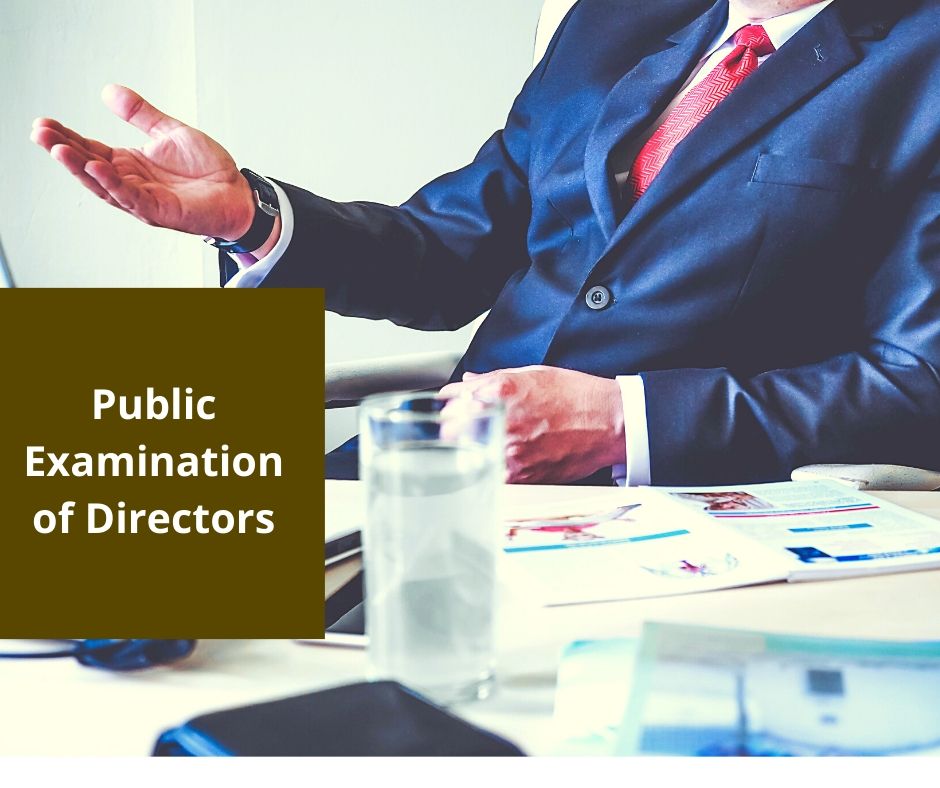Circumstances in which a Director of a Company May Be Publicly Examined in Court
by Mavinthra Jothy Thillainathan ~ 7 May 2020


Lavinia Kumaraendran (Partner)
Tel: 603-6201 5678 / Fax: 603-6203 5678
Email: lkk@thomasphilip.com.my
Website: www.thomasphilip.com.my

Mavinthra Jothy Thillainathan (Senior Associate)
Tel: 603-6201 5678 / Fax: 603-6203 5678
Email: mjt@thomasphilip.com.my
Website: www.thomasphilip.com.my
One of the primary functions of a liquidator is to investigate the affairs of an insolvent company. This must be done not only for him to discharge his duty of realising and distributing the assets of the company, but also because it may lead to an examination or prosecution of delinquent officers.
To facilitate the investigation and fact-gathering exercise, the directors of the company are required by law to furnish the liquidator with a statement of affairs. However, in the event there is a lack of cooperation to provide such information or if the investigation reveals fraudulent or dishonest dealings having been carried out by the director(s), the liquidator can opt for a public examination of the said director(s).
This article will explore how the public examination mechanism provided under Section 503 of the Companies Act 2016 (the “Act”) (previously Section 250 of the Companies Act 1965) can be a useful tool to a liquidator in the discharge of his duties.
Who may be publicly examined?
As its name suggests, a public examination or commonly referred to as “PE”, is an oral examination of an officer of the company on oath. It is conducted in open court at any point prior to the dissolution of a company in a winding – up. The Companies (Winding-Up) Rules 1972 (the “Winding – Up Rules”) provide that a liquidator may appoint an advocate to assist him in carrying out such an examination. Under the Act, the individual to be publicly examined (termed the examinee), can either be any person or officer of the company (presently or previously employed) or any person capable of giving such information relating to the affairs of the company (e.g. bankers, auditors, advocates etc). In short, the list of individuals that may be examined publicly is non-exhaustive. He or she will ordinarily be asked questions pertaining to the business of the company, the whereabouts of certain company assets, contracts and transactions carried out in a given time frame and the management of the accounts and records of the company.
When and Why can a public examination be ordered?
Under Section 503 of the Act, the Court may on its own volition or by way of an application filed by the liquidator, make an order for the public examination of an officer of the company. However, there are certain conditions to be met as a precursor to this exercise, namely, the liquidator must in his report submitted to Court, state that in his opinion, either:
- A fraud has been committed;
- Any material fact in relation to the formation of the company or the company’s affairs since its formation has been concealed; or
- In relation to the affairs of the company, any officer of the company has failed to act honestly or diligently or has been guilty of any impropriety or recklessness.
Ordinarily, a liquidator will avail the avenue of public examination where it is difficult to obtain information because of uncooperative persons or the relevant documents are not available or in some cases, destroyed. The liquidator will seek to fill in the missing gaps in information or to find new information. In that sense, the public examination mechanism is akin to ‘piecing together the missing pieces of a puzzle’.
There may be instances in which the directors of a company have undertaken fraudulent commercial transactions with little or no documents in support thereof. In such cases, the examination will enable the liquidator to advise the creditors to bring a civil action against the delinquent director(s) or in some serious cases, lodging a police report against the said individuals.
It is important to note that the Act also allows any creditor or contributory of the company to participate in the public examination exercise. Likewise, these creditors and contributories can attend the proceedings through their appointed advocates. This showcases transparency as creditors are given an opportunity to ask questions relating to the company’s affairs and the debts owed to them. The Court in Re: Goh Wai Kah; Ex Parte Tan Lay Lee [2006] 6 CLJ 308 made clear that as a matter of principle, the purpose of public examination is to secure a full and complete disclosure of the facts relating to the insolvency in the interest of the public and not merely in the interests of individual creditors.
Procedure
Rule 53 of the Winding – Up Rules provides that upon an order for public examination having been made, the liquidator must apply to appoint a day to hold the examination and once a date is set, the liquidator must notify the examinee and furnish him with a copy of the liquidator’s report before the examination takes place. In addition to notifying the examinee, the liquidator must also notify the creditors and contributories of the examination by gazetting and advertising a notice of the place and time appointed for the examination.
The public examination will ordinarily be held in open court, although there are provisions that allow for the examination to take place in the Judge’s chambers. The court may either ask questions or allow questions to be put to the examinee, and the latter is bound to answer all the questions. Section 503(8) of the Act provides that notes of the examination will be taken down in writing during the session. Once completed, the notes of the examination will be filed in court after it is read over to and signed by the examinee. These notes shall be open to the inspection of any creditor or contributory at all reasonable times and may be used as evidence in any subsequent legal proceedings against the examinee.
Benefits & potential drawbacks of a public examination
Besides assisting liquidators in the discharge of their duties, the public examination also serves as a platform to hold directors of companies accountable for their wrongdoings, particularly where it concerns financial crimes such as bribery, fraud, and misappropriation of monies. Company heads found liable for breaching their fiduciary duties will not only be answerable to creditors of the company but also to investors and members of the public (if public funds are involved). In addition, in cases where improper dealings are found to have taken place, the government, GLCs or the Central Bank may opt to blacklist these companies from future dealings or seeking to tender for contracts.
Whilst it has its benefits, there are occasions in which the public examination mechanism has been open to abuse. In the case of Hicom Bhd v Bukit Cahaya Country Resorts Sdn Bhd & Anor [2005] 8 CLJ 194, the Court opined that there are instances where public examinations are conducted without a reasonable basis or any real prospect of recouping losses of the company. In such instances, the courts are reminded to be cautious in allowing a proposed examination to proceed and the oppression that the proposed examinee may face. Often times, liquidators are quick to conclude that there have been acts of misfeasance committed within a company on account of poor documentation or improper management of accounts. In such cases, the public examination procedure is used merely as a ‘fishing expedition’ that may not necessarily be relevant to the goal of realising the assets of the company.
In summary, it cannot be gainsaid that the public examination mechanism is an important and useful tool for insolvency practitioners. Ultimately, it is one of many means that liquidators have at their disposal to maximise benefits to the creditors of the company.